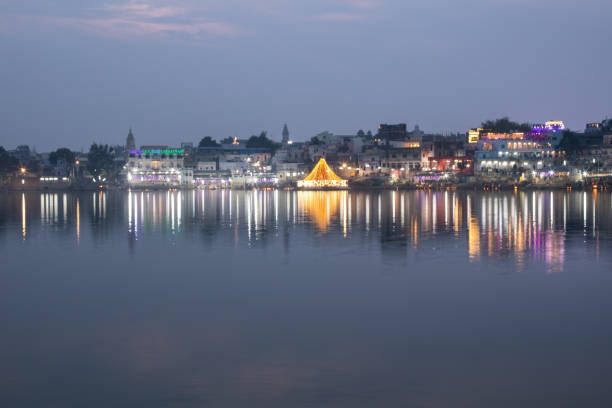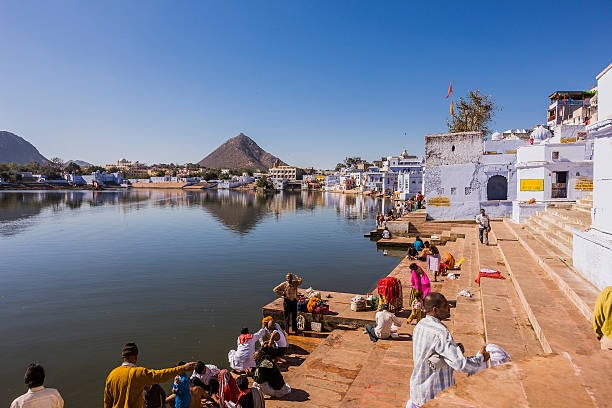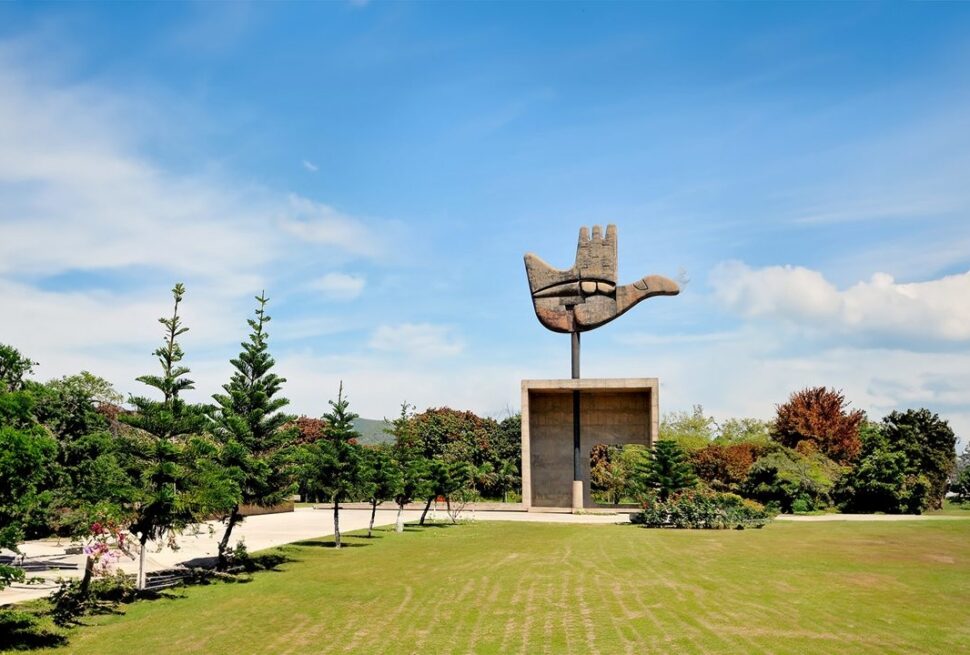Are you planning a trip to Pushkar? We have prepared a summary of what to see and do in Pushkar in this small guide that we have compiled by collecting information from other travelers, travel guides, local opinions and, above all, our own experience. We hope it helps you.
Pushkar is one of the cities in India that we will surely never forget for its mysticism, tranquility and the natural setting that surrounds it, although if we have to find a fault with it, it is its large accumulation of tourists in trip to Pushkar.
Pushkar is a small town north of Ajmer, in the state of Rajasthan. It is a small oasis in the desert area of northern India, in the Aravalli Mountains. Its name means blue lotus flower and the place and especially its central lake are sacred to the Hindu religion, being one of the five Dhams (places of pilgrimage).
This very old city (the presence of inhabitants dates back to prehistoric times) is a place of extreme importance for the Hindu religion. Legend has it that the gods released a swan carrying a lotus flower in its beak and, wherever it dropped the flower, Brahman would make a great yajnya (ritual offering). The place in question was Pushkar Lake, and hence the meaning of its name.
The city receives a great deal of tourism, whether from Hindus themselves who come to this sacred site on pilgrimage, or from the thousands of foreign tourists who seek a haven of peace and tranquility after visiting the bustling Indian cities, and a place where they can buy a variety of items at very good prices and enjoy more international cuisine (since the accommodations and restaurants are totally geared towards this type of tourism).


What to see and do in Pushkar
Brahma Temple
Pushkar has more than 500 temples, although none are too old for the age of the city, as many had to be rebuilt after the Muslim conquests. But if there is one that stands out, it is undoubtedly the Brahma temple, as it is one of the few in all of India dedicated to this Hindu god, considered the most important, the creator.
The Brahma Temple dates back to the 14th century and is made mainly of marble and stone. You will be able to identify it without any problem when you arrive at the area thanks to the crowd, the barriers to queue, the drawers where you leave your shoes at the entrance and its distinctive red Sikhara-shaped shoe cover. .
When you arrive you will be asked to leave your shoes in the drawers and pay for them, but in reality it is a free service.
Strict religious services are held three times a day (at dawn, at noon and at dusk). Also, on Kartik Purnima, the full moon night between October and November (Kartik), a special festival is organized to worship Brahma.


Pushkar Lake
Pushkar Lake is the area around which the entire city is built and the most sacred place. It is surrounded by 52 ghats, steps that you must walk barefoot.
This lake is very magical and peaceful, and it is beautiful to visit at any time of day, but especially at dusk, when the ritual fire called Aarti takes place at sunset, which is celebrated every day on its shores.
Of course, it is worth mentioning that there are many “ceremonialists” on the shore of the lake or at the entrances to it, waiting for foreigners like us to appear and “accompany us” with an offering in their hands to perform a ritual, which they say is necessary when arriving at Pushkar. At the end of this ceremony they will ask you for money (they asked us for €20 each), it is your decision to make the offering and how much to pay for it, just to tell you that it is not obligatory.


Savitri Temple and Gayatri Mata Temple
Crowning the two highest mountains surrounding Pushkar are two temples, from which we will have beautiful panoramic views.
Savitri Temple is located in the southwest of Pushkar and you have two options to get to the top: the most comfortable is by cable car for about 120 rupees, and the other is on foot, climbing a long staircase full of monkeys to the top. We went up on foot and we highly recommend it, since the path is short (approximately 1 kilometer) and easy, and when you reach the top you get an impressive reward with the views.
Gayatri Mata Temple is located north of Pushkar and the route to get there on foot is shorter, about 20 minutes.
The best time, and the most advisable, to go up is early in the morning, since it tends to be quite hot and it is an open path without shade. At the start of the trail you can find stalls where you can stock up, tuk-tuks and people offering camel rides (we advise against using this service, the animals work for many hours a day without rest and under the sun).


Badi Basti Market
For us, one of the most popular plans in Pushkar was to wander around the lake where you will find this varied market with items at very good prices, street food stalls, restaurants and cafes (many of them with cozy terraces overlooking the lake).
Cremation Site
We discovered the cremation Site by chance while going all the way around the lake, in the southern area. It is not very well known by tourists, you will only see local people and there is not much to see, but it is interesting to learn about the funeral ritual they carry out: they cover the deceased with piles of wood and incinerate him until the flame goes out.
You will find some people who live around the lake and cover themselves with the resulting ash, since according to their belief, in this way they acquire part of the wisdom of the deceased.


Where to eat in Pushkar
In Pushkar, due to the tourist focus that we mentioned, you can find any type of food you are looking for, pizza, pasta, falafel, hamburgers… But also (of course) Indian food.
One of the products that we liked the most was the typical Indian ice cream, Kulfi, made from milk and saffron, although you can find them in different fruit flavors.
Om Shiva Garden Restaurant
Next to the usual spot to watch the sunset at Lake Pushkar is this restaurant with a large terrace. It has a wood oven for pizzas and the pasta is quite good, and it also has a great menu.
The quality of the service, the cleanliness and the continental food make the place not very cheap, but if you need to eat well this is your place.
Ganga Laffa & Falafel Restaurant
On the main street of the market is this small street stall with red stools and walls covered in artificial grass where they make some amazing Falafels. They have a huge menu and the prices are very cheap. The best thing for us was that we could take a break from the spicy Indian food, so we ate very comfortably.
Sonu Juice Center Pushkar
Right in front of the aforementioned is a place where they make hundreds of shakes, juices and our favourites, lassis (smoothies with yoghurt typical of India). They have a huge variety to choose from, they are natural, they prepare them for you at the moment and they are very well priced. Of all India, the best we have tried.


How to get to Pushkar
To get to Pushkar, wherever you are, the easiest way is to first go to Ajmer (although depending on where you are you will also find direct buses), either by bus, train or whatever option you have chosen. Once you have arrived, go to the Ajmer bus station and ask for directions to Pushkar. There are many buses with this route, as Pushkar is a sacred city with a lot of worshippers and tourists, so you won’t have any trouble finding one.
The hardest part will be getting a good price on the bus. After talking to several people and haggling as much as possible, it cost us 200 rupees each. We don’t know if the price was correct, but at the time it seemed like a good price to get to our destination.
You’ll be on the bus for about 1 hour, as you have to cross a mountain pass, but the road is not dangerous. The bus will drop you off at the Pushkar bus station, which is located just 5 minutes from the main market street and less than 10 from Pushkar Lake, the sacred center of the entire city.
Pushkar is a fairly small city, you can walk around it in less than an hour, so we recommend that you wander around the streets to discover all its charm. If you want to get around more quickly, you will find many places where you can rent a motorbike or a bicycle.


Fun facts about Pushkar
- The consumption of meat and eggs is prohibited in Pushkar, as it is a sacred Hindu city.
- Pushkar is a very old city, it is even mentioned in sacred Hindu texts in the first millennium.
- Between 1801 and 1947 the city of Pushkar was under British rule.
- The city of Pushkar has around 25,000 inhabitants and an 80% literacy rate.
- Pushkar is home to more than 500 temples and shrines, the main one in honour of Brahma, one of the few in all of India.
- In November a great festival is held which was originally for the buying and selling of cattle, but with the large influx of tourists it has become a day full of exhibitions, music and many camels.
Tips for Trip to Pushkar
If you have come to India to do business with clothes or other items, Pushkar is a very good option. You will find everything, even manufacturers or exporters, with very interesting prices.
Be careful with the faithful on the shore of Lake Pushkar, they will ‘force’ you to give them a donation after an offering to the lake.



